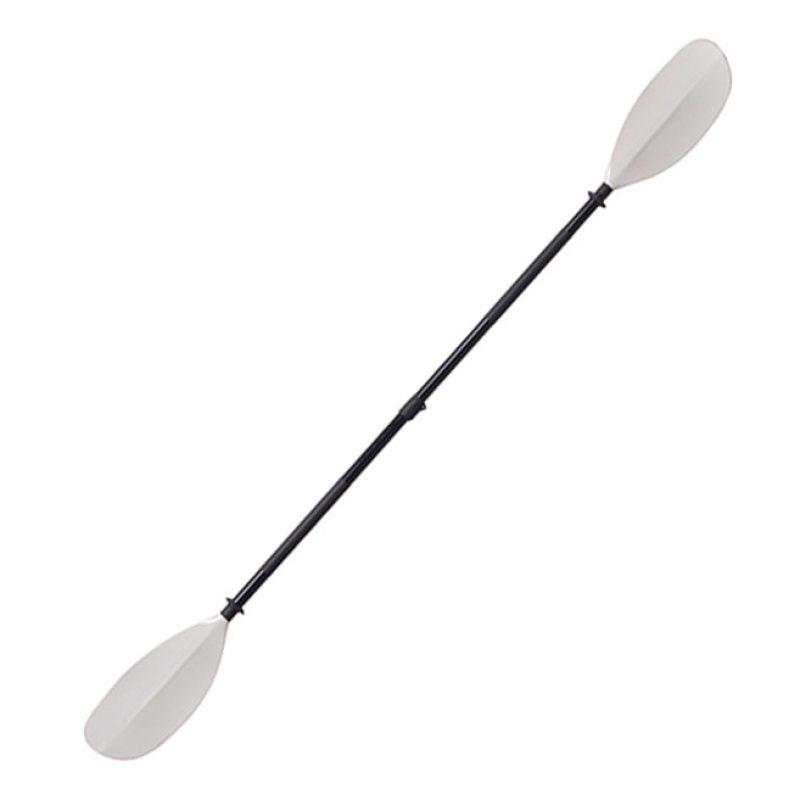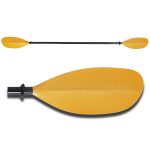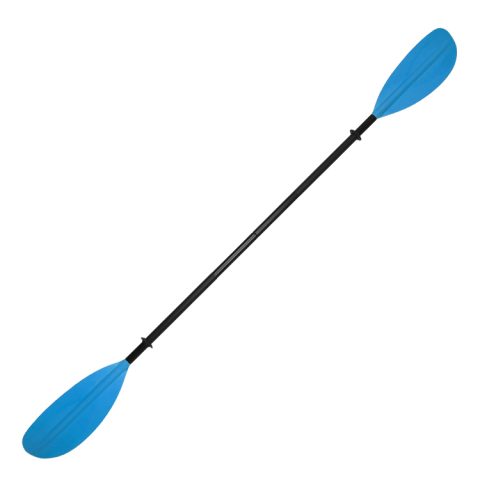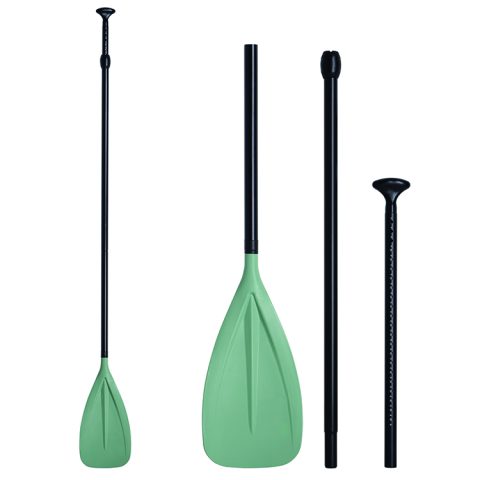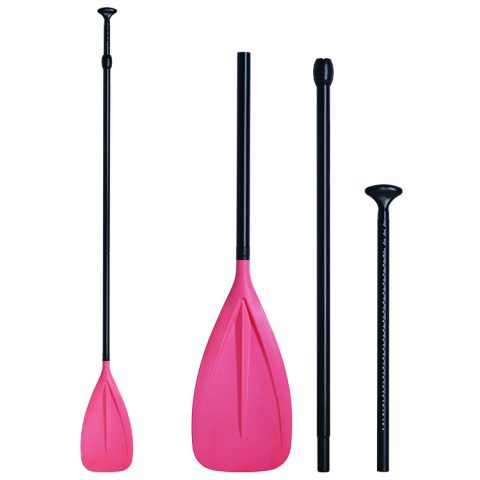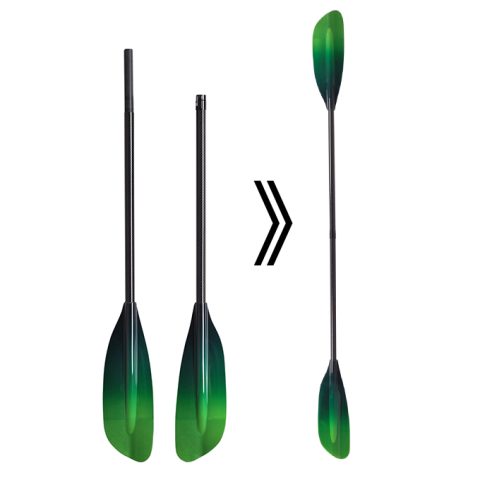Product Name2 Pieces PP blade and Aluminum shaft kayak paddle
Item Number: TJ-KP006
haft Material:Anodized aluminum
Blade Material:PP
Color:White, black. yellow or customized
Adjustable: 10cm length range.
Length:205-215cm, 210-220cm, 215-225cm, 220-230cm, or customized length

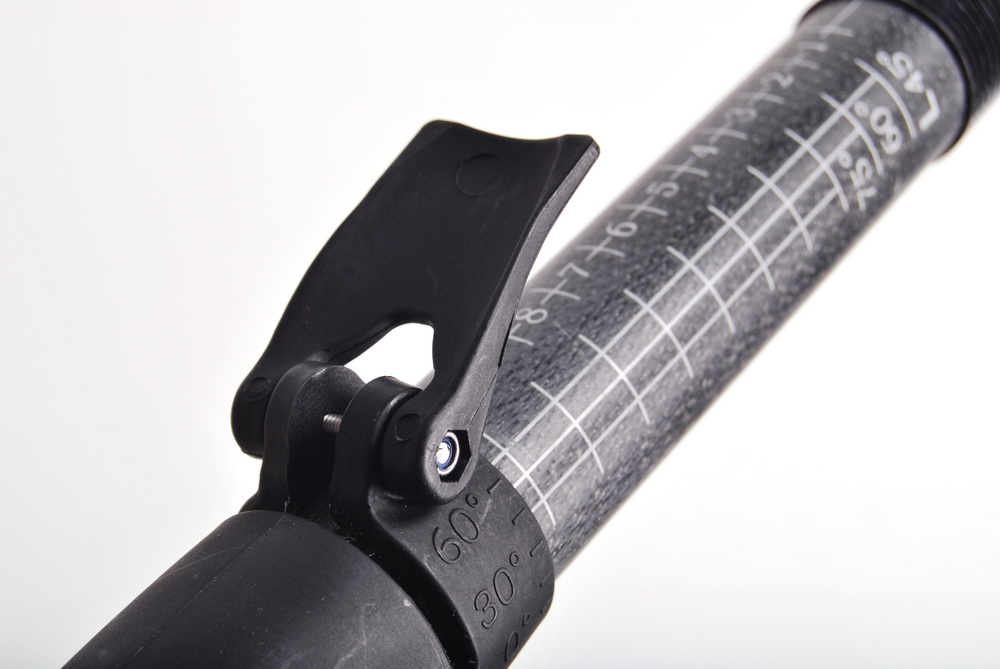
If you are interested in our products and want to know more details,please leave a message here,we will get in touch with you as soon as possible!
How to Use an Aluminum Kayak Paddle: Master the Basics for Smooth Paddling
The kayak paddle is your most essential tool on the water, and the aluminum kayak paddle is a popular choice among kayakers of all skill levels. Durable, affordable, and versatile, aluminum kayak paddles are perfect for beginners and seasoned paddlers alike. This guide will help you understand how to use an aluminum kayak paddle effectively while ensuring your paddling experience is enjoyable and efficient.
Why Choose an Aluminum Kayak Paddle?
Before diving into the techniques, let’s explore why an aluminum kayak paddle is a reliable option:
- Durability: Aluminum kayak paddles are built to withstand tough conditions. Whether you’re paddling in calm lakes or tackling rocky rivers, their robust construction ensures long-lasting performance.
- Affordability: Compared to carbon fiber or fiberglass paddles, aluminum kayak paddles are budget-friendly, making them an excellent choice for beginners or occasional paddlers.
- Lightweight Design: Although heavier than some premium materials, aluminum kayak paddles strike a balance between weight and durability, ensuring they’re easy to handle without compromising sturdiness.
- Versatility: Suitable for various water conditions, these paddles work well for recreational kayaking, fishing, and touring.
Parts of an Kayak Paddle
Understanding the anatomy of your aluminum kayak paddle is crucial before learning how to use it. Key components include:
- Shaft: The aluminum shaft is the main part of the paddle you grip. It’s often coated with a comfortable grip material to prevent slipping.
- Blades: The paddle blades, made from plastic or reinforced nylon, are attached to either end of the shaft. These are the parts that propel your kayak through the water.
- Drip Rings: Located near the blades, drip rings prevent water from running down the shaft and soaking your hands.
- Ferrule: The ferrule connects the two pieces of a paddle (if it’s a two-piece design) and allows for easy assembly and disassembly.
How to Hold an Aluminum Kayak Paddle
Holding your aluminum kayak paddle correctly is the foundation of effective paddling. Follow these steps:
- Grip Placement: Place your hands slightly wider than shoulder-width apart on the shaft. Ensure your knuckles are aligned with the blade’s top edge for optimal control.
- Relax Your Grip: Avoid holding the paddle too tightly. A relaxed grip reduces fatigue and prevents strain on your hands and wrists.
- Right-Side Orientation: Check that the blades are facing the correct direction. The concave side (scooped side) should face you to maximize efficiency.
Basic Paddling Techniques with an Aluminum Kayak Paddle
1. Forward Stroke
The forward stroke is the most commonly used technique for moving your kayak straight ahead. Here’s how to execute it:
- Start Position: Sit upright in your kayak with your aluminum kayak paddle held in both hands.
- Blade Entry: Submerge one blade into the water near your feet, ensuring the blade is fully immersed.
- Pull: Pull the paddle back alongside the kayak, keeping it close to the hull for maximum efficiency.
- Alternate Sides: Lift the blade out of the water and repeat the process on the opposite side. Maintain a steady rhythm for smooth forward motion.
2. Reverse Stroke
The reverse stroke helps you move backward or stop your kayak. It’s essentially the opposite of the forward stroke:
- Blade Entry: Submerge the blade behind you near the stern of the kayak.
- Push Forward: Push the paddle forward, moving the blade toward the bow while maintaining control.
- Alternate Sides: Repeat on the other side as needed.
3. Sweep Stroke
The sweep stroke allows you to turn your kayak in either direction. Use this technique to navigate tight spaces or make wide turns:
- Start Position: Insert the blade into the water near your feet on one side.
- Wide Arc: Sweep the blade in a wide arc away from the kayak, turning the boat in the opposite direction of the paddle’s side.
- Repeat: Alternate sides if a sharper turn is needed.
4. Draw Stroke
The draw stroke is used for moving your kayak sideways, such as when docking:
- Blade Placement: Extend the paddle blade perpendicular to the kayak and submerge it in the water.
- Pull Toward You: Pull the blade toward the kayak, keeping it parallel to the boat for a smooth sideways motion.
- Adjust Position: Repeat as needed to achieve the desired movement.
Tips for Using an Aluminum Kayak Paddle
1. Adjust Blade Angle
Many aluminum kayak paddles have feathered blades, meaning the blades are offset at an angle. This design reduces wind resistance and improves paddling efficiency. Adjust the ferrule to set the blade angle that suits your paddling style.
2. Practice Proper Posture
Maintaining good posture minimizes fatigue and improves paddling efficiency. Sit upright with your core engaged, and use your torso to rotate during strokes instead of relying solely on your arms.
3. Use Drip Rings Effectively
Position the drip rings correctly to keep water from dripping onto your hands. This is especially helpful during long paddling sessions or in colder conditions.
4. Protect Your Paddle
Aluminum kayak paddles are sturdy, but proper care ensures their longevity. Rinse your paddle with fresh water after each use, especially if paddling in saltwater. Store it in a dry, shaded area to prevent corrosion.
Common Mistakes to Avoid
- Overgripping: Holding the paddle too tightly can lead to hand and wrist fatigue. Keep your grip relaxed.
- Poor Blade Angle: If the blade enters the water at the wrong angle, it can reduce efficiency and cause splashing. Focus on maintaining the correct blade orientation.
- Excessive Arm Usage: Overusing your arms instead of your core can lead to quicker fatigue. Use your torso for power and stability.
- Neglecting Maintenance: Failing to clean and store your paddle properly can lead to wear and tear over time.
Where to Use an Kayak Paddle
- Calm Lakes: Perfect for beginners to practice their paddling techniques.
- Coastal Waters: Durable enough to handle light waves and saltwater conditions.
- Rivers: Strong enough to withstand impacts from rocks or debris in flowing rivers.
- Recreational Paddling: Ideal for leisurely paddling sessions or short excursions.
Choosing the Right Kayak Paddle
- Length: Match the paddle length to your height and the width of your kayak. Longer paddles are better for wider kayaks, while shorter paddles suit narrower ones.
- Blade Shape: Choose between asymmetrical and symmetrical blades. Asymmetrical blades are more efficient, while symmetrical blades are easier for beginners to use.
- Two-Piece vs. One-Piece Design: Two-piece paddles are easier to transport and store, while one-piece paddles offer added durability.
Conclusion
An aluminum kayak paddle is an essential tool for anyone looking to enjoy kayaking, offering a balance of durability, affordability, and ease of use. By mastering the techniques outlined in this guide and taking proper care of your paddle, you can elevate your kayaking experience to new heights. Whether you’re exploring tranquil lakes or navigating flowing rivers, your aluminum kayak paddle will be a reliable companion on the water.
Embrace the adventure, paddle with confidence, and make the most of your time on the water with an aluminum kayak paddle.


